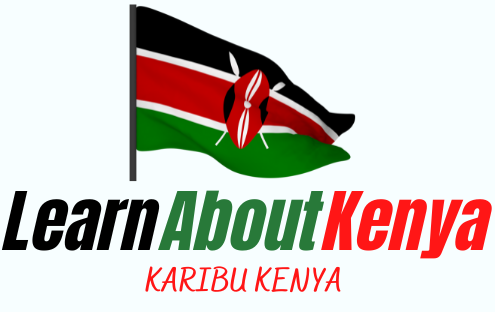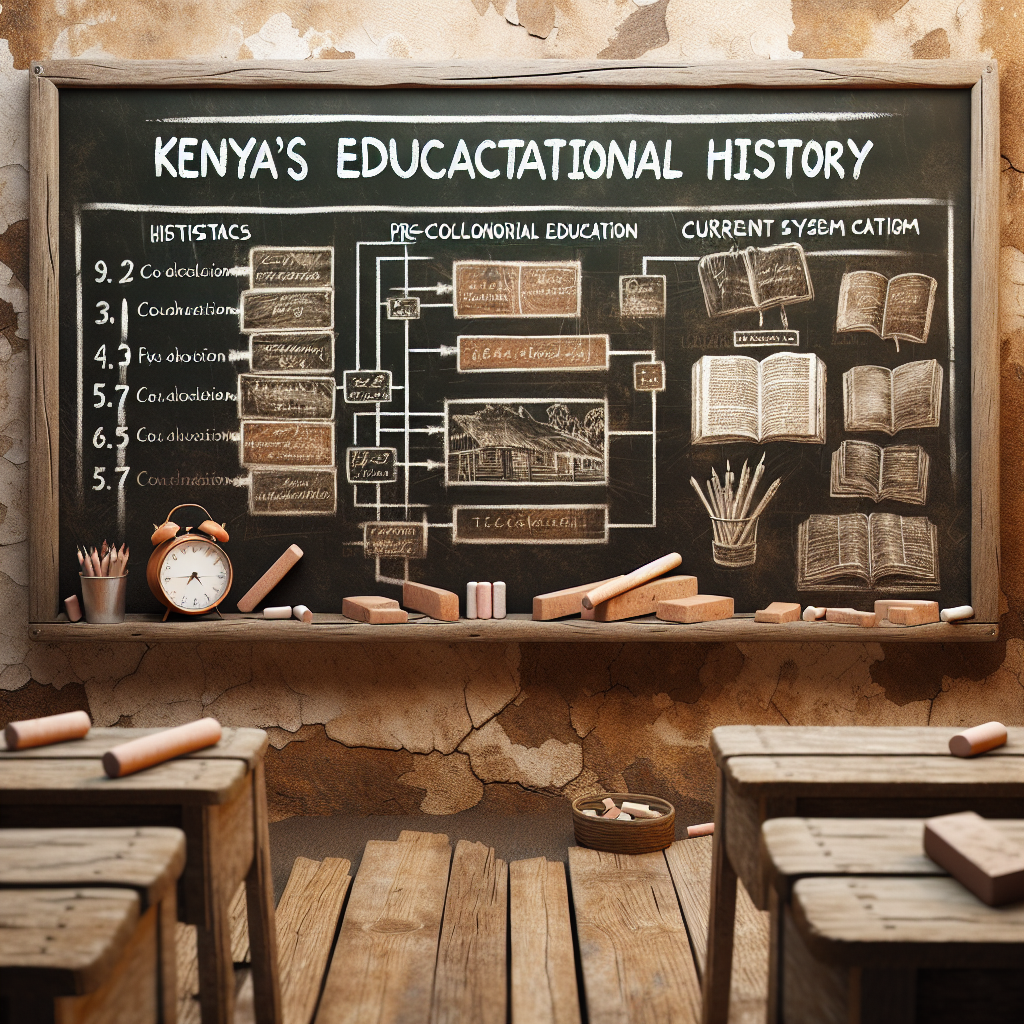What Are Some Key Milestones In Kenya’s Educational History?
In Kenya’s rich educational history, there have been several pivotal moments that have shaped the country’s approach to learning. From the establishment of the first formal education system to the introduction of free primary education, these milestones have played a significant role in ensuring access to education for all. Additionally, the implementation of the 8-4-4 system and the subsequent shift to the Competency-Based Curriculum have further revolutionized the way knowledge is imparted and acquired. Join us as we explore these key milestones and their lasting impact on Kenya’s educational landscape.
Introduction
Kenya’s educational system has undergone significant transformations throughout its history, with various milestones shaping the current landscape. From the early days of pre-colonial education to the introduction of digital literacy programs and competency-based curriculum, Kenya has continually strived to provide quality education for its citizens. This article will explore the key milestones in Kenya’s educational history, highlighting the impacts, challenges, and future prospects.
1. Early Education in Kenya
1.1 Pre-Colonial Education
Before the arrival of European settlers, Kenya had a rich tradition of education embedded in its culture. Education was primarily conducted by indigenous communities and focused on transmitting knowledge, skills, and values from one generation to the next. This education covered various aspects, including farming techniques, hunting skills, oral traditions, and social norms. Teaching methods were mainly based on apprenticeship and practical demonstrations, where children learned by observing and imitating their elders.
1.2 Arrival of Missionary Education
The arrival of European missionaries in the late 19th century brought about a significant shift in Kenya’s educational landscape. Missionaries established schools, introducing Western-style education and Christianity. These schools played a crucial role in providing basic literacy skills, vocational training, and religious education to the local population. However, access to missionary schools was limited, primarily serving children from privileged backgrounds.
2. Post-Colonial Education Initiatives
2.1 Lancaster House Conference
In 1963, Kenya gained independence, marking a turning point in its educational history. The Lancaster House Conference held in London resulted in key decisions regarding the future of education in the country. The conference aimed to address disparities in access to education, eliminate racial segregation, and promote quality education for all. As a result, the Kenyan government embarked on a mission to transform the education system and make it more inclusive.
2.2 Universal Primary Education (UPE) Policy
As part of its commitment to provide free and compulsory education to all children, the Kenyan government implemented the Universal Primary Education (UPE) policy in 1974. The UPE policy aimed to eliminate barriers to education by abolishing school fees and encouraging enrollment. This initiative significantly increased primary school enrollment rates and access to education for many Kenyan children, especially those from disadvantaged backgrounds.
3. Mid-20th Century Educational Reforms
3.1 The Swynnerton Plan
In 1954, the colonial government introduced the Swynnerton Plan with the goal of expanding and improving African agricultural education. This plan aimed to equip Africans with the necessary skills and knowledge to enhance agricultural productivity in rural areas. The Swynnerton Plan emphasized practical, vocational training and provided resources for establishing technical schools and promoting agricultural education.
3.2 Expansion of Secondary Education
During the post-independence era, Kenya witnessed remarkable growth in secondary education. The government introduced policies to increase the number of secondary schools and improve access to quality education. This expansion of secondary education opportunities opened doors for more students to pursue higher education and acquire the skills necessary for employment in various sectors.
4. Introduction of Free Primary Education (FPE)
4.1 Origins of Free Primary Education
In 2003, the Kenyan government launched the Free Primary Education (FPE) program, building upon the success of the UPE policy. The FPE program aimed to eliminate financial barriers to education, enhance enrollment, and improve access to quality education for all Kenyan children. This milestone marked a significant step forward in achieving the education for all goal.
4.2 Impacts and Challenges
The introduction of FPE had a profound impact on primary school enrollment rates, with a significant increase in the number of children accessing education. However, the sudden surge in enrollment placed a strain on infrastructure, resources, and teacher capacity. This led to overcrowded classrooms, shortages of learning materials, and challenges in maintaining quality standards. Nevertheless, FPE remains a milestone in Kenya’s educational history, acknowledging the importance of free and accessible primary education.
5. Education for All (EFA) Goals
5.1 Development and Implementation of EFA Goals
Kenya’s commitment to providing quality education led to its active involvement in the Education for All (EFA) movement. The EFA goals, established in 2000, aimed to address multiple dimensions of educational development, including access, equity, quality, and lifelong learning. Kenya developed comprehensive strategies and policies to achieve these goals, focusing on expanding access to education, improving teacher training, enhancing curriculum development, and strengthening governance.
5.2 Achievements and Ongoing Efforts
Kenya has made significant strides in achieving the EFA goals. The country has witnessed increased enrollment rates, improved gender parity in schools, and reduced disparities in access to education. Ongoing efforts focus on sustaining these achievements, ensuring quality education, enhancing inclusive practices, and addressing issues of equity, particularly for marginalized populations.
6. Digital Literacy Program
6.1 Introduction of Digital Literacy Program
Recognizing the importance of digital skills in the 21st century, Kenya launched the Digital Literacy Program in 2013. This ambitious initiative aimed to equip every primary school-going child with a laptop, bridging the digital divide and enhancing access to technology-enabled learning. The program not only provided devices but also emphasized digital literacy training for teachers and integration of technology in the curriculum.
6.2 Integration of Technology in Education
The integration of technology in education holds immense potential for improving teaching and learning outcomes. The Digital Literacy Program in Kenya fostered the use of digital tools, educational software, and online resources for interactive, student-centered education. This approach facilitates collaboration, critical thinking, and problem-solving skills among students. Although challenges such as limited access to infrastructure and training persist, Kenya’s focus on digital literacy showcases its commitment to preparing learners for the digital age.
7. Competency-Based Curriculum (CBC)
7.1 Rationale and Objectives
In 2017, Kenya introduced the Competency-Based Curriculum (CBC) as a progressive shift from the traditional rote learning approach. The CBC aims to develop students’ skills, knowledge, and attitudes through a learner-centered and practical approach to education. It emphasizes the acquisition of competencies such as critical thinking, creativity, communication, collaboration, and problem-solving, equipping learners with the skills necessary for the 21st-century workforce.
7.2 Challenges and Future Prospects
While the CBC brings promising changes to Kenya’s education system, it also faces challenges in implementation. Adequate training and support for teachers, availability of resources, and effective monitoring and evaluation mechanisms are essential for successful implementation. The future prospects of CBC rely on addressing these challenges, refining curriculum frameworks, and ensuring alignment with the evolving educational landscape.
8. Tertiary Education Reforms
8.1 Establishment of Public Universities
Kenya has witnessed significant reforms in its tertiary education sector. In the post-independence period, the government established several public universities to meet the growing demand for higher education. This expansion of tertiary education opportunities has allowed a greater number of Kenyan students to pursue advanced degrees and acquire specialized skills.
8.2 Introduction of Higher Education Loans Board (HELB)
To enhance access to tertiary education, the Kenyan government established the Higher Education Loans Board (HELB) in 1995. HELB offers loans and bursaries to students from economically disadvantaged backgrounds, enabling them to pursue higher education. This initiative has significantly increased access for deserving students who may have otherwise been unable to afford college tuition.
10. Future Prospects and Challenges
10.1 Addressing Equity in Education
While Kenya has made significant progress in increasing access to education, challenges related to equity and inclusivity remain. Disparities persist, particularly for marginalized groups, including girls, children from low-income families, and those in remote areas. Addressing these disparities requires a multifaceted approach, including targeted interventions, enhanced infrastructure, teacher training, and community engagement to ensure that no child is left behind.
10.2 International Collaborations and Partnerships
Kenya recognizes the importance of international collaborations and partnerships in advancing its educational goals. Collaborations with other countries, international organizations, and non-governmental organizations have resulted in valuable exchanges of knowledge, expertise, and resources. Promoting such collaborations can further enhance educational reforms, expand access to quality education, and learn from global best practices.
In conclusion, Kenya’s educational history is marked by significant milestones that have shaped its current educational landscape. From the early days of pre-colonial education to the introduction of initiatives like free primary education, digital literacy programs, and competency-based curriculum, Kenya has demonstrated its commitment to providing quality education for all. While challenges persist, Kenya’s educational journey highlights its dedication to creating an inclusive, equitable, and forward-thinking educational system. The ongoing efforts, collaborations, and future prospects pave the way for a brighter educational future for Kenya.






